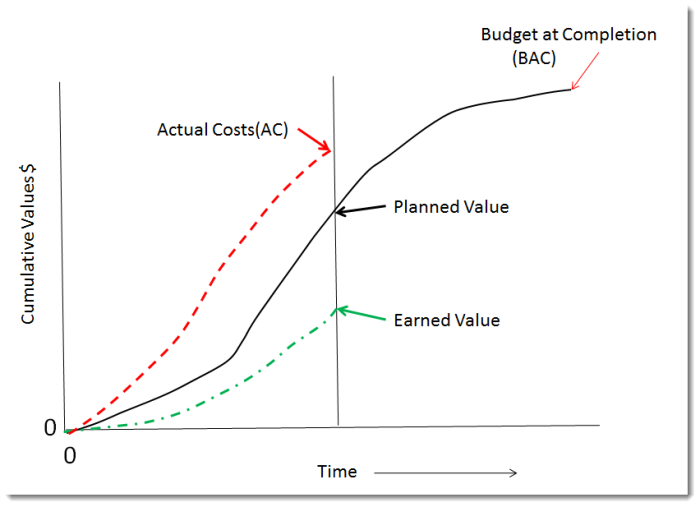
 Data Structure
Data Structure Networking
Networking RDBMS
RDBMS Operating System
Operating System Java
Java MS Excel
MS Excel iOS
iOS HTML
HTML CSS
CSS Android
Android Python
Python C Programming
C Programming C++
C++ C#
C# MongoDB
MongoDB MySQL
MySQL Javascript
Javascript PHP
PHP
- Selected Reading
- UPSC IAS Exams Notes
- Developer's Best Practices
- Questions and Answers
- Effective Resume Writing
- HR Interview Questions
- Computer Glossary
- Who is Who
Performance Reporting in the Project Management
In the dynamic and complex world that we live in, every task or project runs in a circle. There is no linear destination for the business or the project. If a certain task has been completed, they have to submit the outcome for monitoring and controlling purposes, and then these reviews are further applied in the working of the project for better outcomes. Performance reporting is one such method. With help of performance, reporting project management becomes easy.
How can performance reporting help in project management?

Performance reporting addresses the outcome of a project or activity. This outcome is compared with the budgeted or standard outcome, and the variance is praised or dealt with. Performance reporting helps the different stakeholders understand the current status of the project, the future plans, and the past work done. It gives the blueprint for the entire project and its life cycle. With performance reporting in project management, stakeholders can protect the company from various financial, operational, and performance shocks. They can drop the projects and activities that are not working, ensure financial returns, and understand the trend for taking on other projects.
Performance reporting is a part of communication management in project management. It aids stakeholders in comprehending,
Current status of the project
Future plan of action for the project
Past actions that have been taken till now
How the various resources are allocated in the project?
A brief summary of the different changes made to the project after the approval of the PMO
What are the different current risks and issues that the project is facing?
Work, cost, and time variance are calculated by deducting the budgeted cost from the actual cost
Forecasted project completion timeline and other relevant information
Various Types of Performance Reporting in Project Management

The current status project report ? This performance report helps the organization understand the current status of the project. What are the current risks involved and issues faced by the project team in the completion of the project? With this report, different stakeholders can also have access to the completion timeline, the quality of the product being manufactured, the scope of the project, and the cost involved or incurred so far in the project.
The progress project report ? This type of report elaborates on what type of work has been done till now as compared to the last time the report was sent. This helps the stakeholders understand the progress the project has made since their last meeting. With this report, the different stakeholders can understand the pace of work and take corrective actions if needed.
The forecasting project report ? This report helps the different stakeholders to understand the future plan of action of the project team members in terms of different parameters. Stakeholders can have a brief idea of what the future is going to bring in normal circumstances. Stakeholders can also dictate certain adjustments as they may seem to fit according to the client's requirements.
The trend project report ? This report is prepared by showing visual differences between the progress of the project in two different time frames. For example, one can prepare a trend report on a monthly, annual, quarterly, or semi-annual basis. Through this report, the different stakeholders can understand if the project is making progress after their last set of suggestions, in which areas, and for what reasons.
The variance project report ? This report shows the difference, or variance, between the projected progress and the actual progress. This report assists stakeholders in setting realistic goals and understanding which parameters caused the variance. Corrective actions are taken if the variance is too high, as a high variance will affect the project's completion cost and time.

The earned value project report ? This report calculates the progress made by the project on various costs, timeliness, quality, scope, and other measures using the earned value mechanism. Earned value, in simple terms, means the percentage of the project done as compared to the actual cost. The two figures generally differ in reality.
After understanding the different types of project reports that can be prepared according to the needs of the organization, we will now try to understand the different parameters that we include in the project reports.
Project Management Plan ? This parameter provides us with the project performance baseline. This performance baseline is further used to understand and calculate various deviations. Deviations can take place in terms of cost, time, quality, and others.
Work performance information (WPI) ? This indicator helps us get a better understanding of the deliverable status of the project, the schedule progress of the project, and the cost incurred on the project by the team members.
Work Performance Measurement (WPM) ? This indicator helps us understand the deviation between the actual progress and the planned progress. Various deviations that are calculated for WPM are
- Planned versus actual costs incurred
- Planned versus actual time taken for the project's completion
- Planned versus actual technical competency achieved by the project team
Budget performance reports ? This helps us understand the actual cost and time that are required to complete the project at the given point in time. More relevant budgets are prepared for the future expected expenditures of the project.
Organization Process Assets ? This provides the project team with templates that can be used by the team for performance reporting. A standard template saves time on comprehension and is simple to create. Though a customizable template as needed is acceptable, some examples are
- Variance limits are set by the organization for various parameters
- Standard report templates and others
Performance reporting helps the project management team in a lot of ways. Performance reports are a major form of communication by team members to the various stakeholders about the team and its achievements. Actions always speak louder than words. Regular performance reporting ensures that the project implementation is in place and, if there are any struggles, they are recognized.

